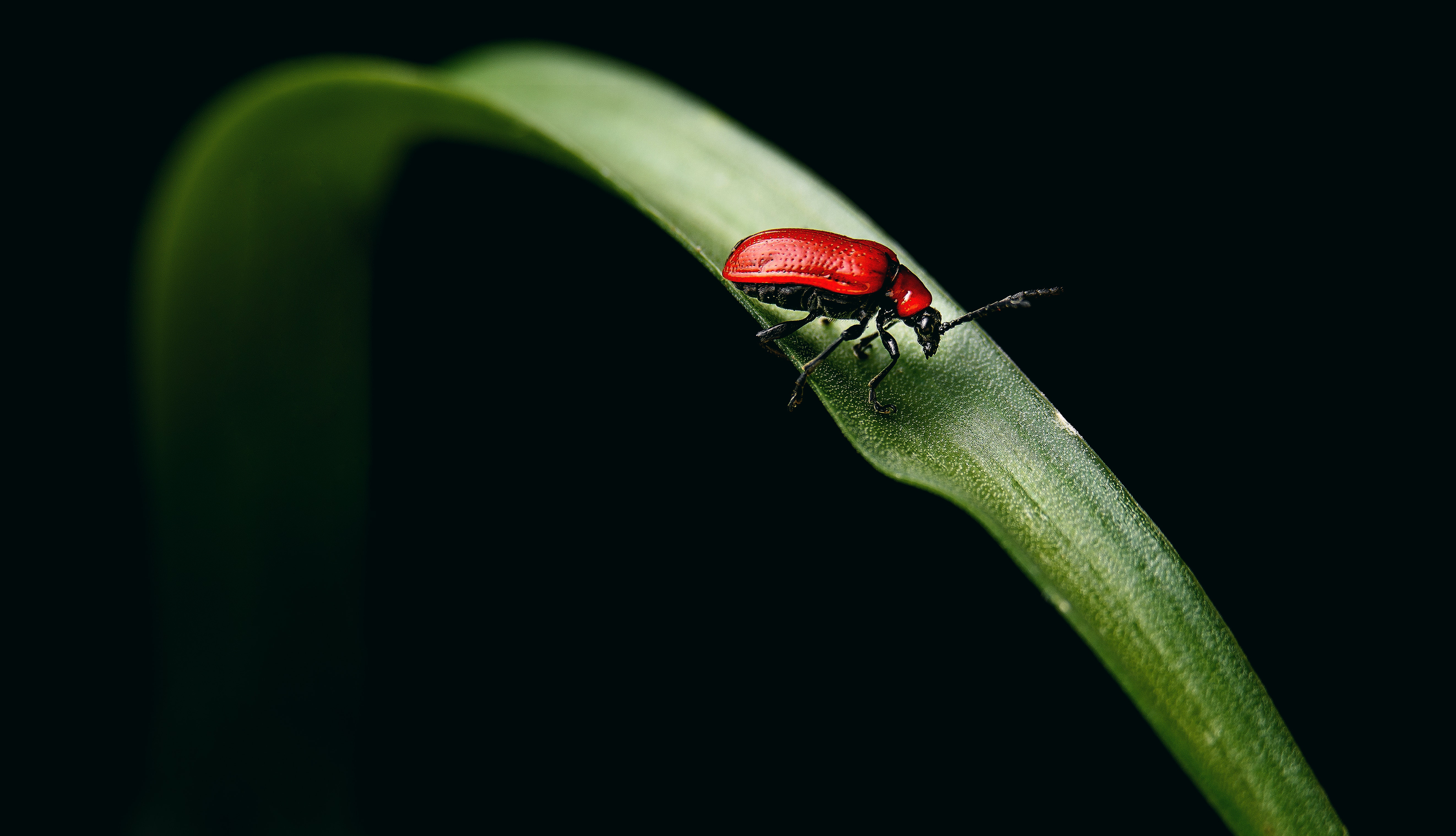Amber Beetle
You must be careful when you have a flame with these beetles. They'll light up from the slightest spark that touches them. - Bug CatcherDeep in the Jungles of the Isles of Refuge resides a particular insect that makes its dwelling around amber when trees produce it. While this is a death sentence for most, this beetle can avoid being trapped by the substance and use it to its advantage.
Basic Information
Anatomy
Insectoid exoskeleton with chitin shell to condense organs with large shell t0o protect the back. Limbs include six long legs that allow them to walk on most surfaces. The shell on the back can be open to allow wings to be released to allow for flight capabilities. The Head has a pair of eyes with two antennae above them. A pair of mandibles are also present to grab onto food.
Biological Traits
Oil: The beetle can produce oil from its body to avoid being trapped in amber and as a defense mechanism to escape predators.
Flammable: They can easily catch fire if they are in contact with any form of heat. Even sunlight can see them set on fire if in direct contact.
Strong Madables : Their mandibles are specially designed to tear into trees and produce resin from them to use as traps to catch insects.
Hormone Mimicry: To catch food, the beetles can replicate the scents of other insects with their oil to lure them into a trap and devour them.
Genetics and Reproduction
Ambers reproduce once a year during the autumn season through heterosexual means. After a few weeks a female will lay up to a hundred to three hundred and fifty eggs. Taking about two weeks the eggs will hatch and create larve.
Growth Rate & Stages
Larvae: Larvae look like worms that will only feed on the greenery they are laid on to grow.
Pupa: A protective cocoon will allow the larvae to grow by developing their bodies and exoskeleton.
Adult: Once they emerge from their cocoon, they will be full-grown adults and venture out into the wild to fend. for themsleves
Ecology and Habitats
Tropical: These beetles are found in tropical environments rich in lush greenery and forests to make their homes. They are often found near trees producing resin that can be turned into amber. It will then create amber nests to protect himself from predators and sunlight, which they will burn. They are nocturnal insects and will often only be out at night, or it is cloudy and will be very little light.
Dietary Needs and Habits
They are omnivores that will eat certain types of plants that they will be able to cut up with their mandibles. As for meat they will often hunt and eat any insects that are trapped in able as they are able to reach them.
Biological Cycle
When in the larvae stage the beetle will grow and shed it exoskeleton several times until it is ready to go into it its pupa stage creating a protective shell to protect them while they grow. After several months they will become full grown adults that will go out on thier own.
Additional Information
Social Structure
Amber Beetles often fend for themselves even when they are larvae and will do so as adults. They live on the same tree in the dozens, but they will fight over food and living space. When mating season comes, however, the males will take up to several females at a time to reproduce and keep them in their den until they are done fertilizing the eggs.
Uses, Products & Exploitation
Oil: The beetle's oil is flammable, making it highly valued as a heat source in the regions they are found in them.
Amber: Due to their ability to produce amber, many will harvest the amber they make to earn some money.
Geographic Origin and Distribution
These insects are mainly found scattered around almost all of the Isles of Refuge from stowing away on ships.
Average Intelligence
The beetles are not competent as they only follow basic instincts, but when near heat, they will try to flee to avoid being set alight. However, it is possible to turn tree resin into amber by molding itself.
Perception and Sensory Capabilities
Touch: Great
Smell: Excellent
Sight: Poor
Hearing: Great
Scientific Name
Natural
Lifespan
3 years
Average Height
4 cm
Average Weight
9 grams
Average Length
5 cm - 6 cm
Average Physique
With its chitin body and compact muscles, the beetle can move faster to avoid attacks and can move langer without feeling exhaustion.
Body Tint, Colouring and Marking
red
Geographic Distribution




Comments